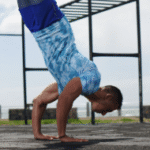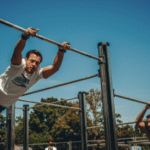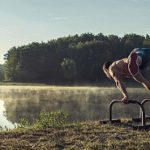Calisthenics for Athletes: Enhance Performance
Calisthenics, with its focus on bodyweight training and functional movements, can be a powerful tool for athletes seeking to enhance their performance. By incorporating calisthenics into their training regimens, athletes can improve strength, power, endurance, flexibility, and overall athleticism, leading to better performance on the field, court, or track. Here’s a detailed look at how calisthenics can benefit athletes:
Benefits of Calisthenics for Athletes
Increased Strength and Power: Calisthenics exercises, such as pull-ups, dips, and squats, engage multiple muscle groups simultaneously, promoting muscle growth and strength. As athletes progress, they can increase the difficulty of these exercises by adding variations or using techniques like plyometrics to further enhance power and explosiveness.
Improved Balance and Coordination: Calisthenics requires athletes to control their bodyweight through various movements, leading to improved balance, coordination, and body awareness. This enhanced proprioception translates to better agility and control during sports and activities.
Enhanced Endurance: High-repetition sets and circuit training with calisthenics exercises can improve muscular endurance, allowing athletes to sustain effort for longer periods.
Increased Flexibility and Mobility: Calisthenics movements often require a full range of motion, promoting flexibility and mobility in joints and muscles. This can improve performance and reduce the risk of injuries.
Functional Strength: Calisthenics exercises often mimic movements used in sports and everyday activities, developing functional strength that directly translates to improved performance on the field or court.
Core Stability: Many calisthenics exercises engage the core muscles, improving core stability, which is essential for generating power and maintaining balance during athletic movements.
Bodyweight Mastery: Calisthenics helps athletes develop mastery over their own bodyweight, enhancing body control and awareness.
Mental Toughness: Overcoming challenging calisthenics exercises builds mental resilience and the ability to push through discomfort.
Effective Calisthenics Exercises for Athletes
Strength and Power Building:
Pull-ups and Chin-ups: Develop pulling strength in the back, biceps, and forearms.
Dips: Build pushing strength in the chest, triceps, and shoulders.
Push-ups: Strengthen the chest, shoulders, and triceps while engaging the core.
Squats: Develop lower body strength in the quads, hamstrings, and glutes.
Lunges: Improve single-leg strength and stability.
Plyometrics for Explosiveness:
Jump Squats: Enhance lower body power and explosiveness.
Box Jumps: Develop explosive leg power and coordination.
Clap Push-ups: Increase upper body power and explosiveness.
Core Strengthening:
Plank: Develops core stability and strength.
Hollow Body Hold: Improves core control and stability.
Leg Raises: Strengthen the lower abdominals.
Flexibility and Mobility:
Dynamic Stretching: Incorporate dynamic stretches, such as arm circles, leg swings, and torso twists, to improve range of motion and prepare for activity.
Yoga and Pilates: These practices can enhance flexibility, mobility, and core strength.
Integrating Calisthenics into Athletic Training
Warm-up: Use calisthenics exercises as part of your warm-up routine to increase blood flow, activate muscles, and improve mobility.
Strength Training: Incorporate calisthenics exercises into your strength training program to build functional strength and power.
Conditioning: Use calisthenics circuits and HIIT (High-Intensity Interval Training) workouts to improve cardiovascular fitness and endurance.
Skill Development: Practice specific calisthenics skills, such as handstands, muscle-ups, or human flags, to enhance body control and coordination.
Recovery: Use lighter calisthenics exercises and stretching on active recovery days to promote blood flow and reduce muscle soreness.
Tips for Athletes Using Calisthenics
Focus on Proper Form: Maintain correct technique to maximize benefits and prevent injuries.
Progressive Overload: Gradually increase the difficulty of exercises as you get stronger.
Listen to Your Body: Rest when needed and avoid overtraining.
Nutrition and Hydration: Fuel your body with a balanced diet and adequate hydration to support your training.
Consistency: Make calisthenics a regular part of your training regimen for consistent results.
By incorporating calisthenics into their training programs, athletes can enhance their strength, power, endurance, flexibility, and overall athleticism. Whether you’re a runner, a basketball player, a martial artist, or any other type of athlete, calisthenics can help you unlock your full potential and achieve peak performance.

Calisthenics for Athletes: Enhance Performance
Route
Calisthenics Gym Houston Functional Bodyweight Training
Secondary phone: (346) 483-3195
Email: info@calisthenicsclubhouston.com
URL: https://calisthenicsclubhouston.com/
Monday 6:00 AM - 7:00 PM Tuesday 6:00 AM - 7:00 PM Open now Wednesday 6:00 AM - 7:00 PM Thursday 6:00 AM - 7:00 PM Friday 12:00 PM - 6:30 PM Saturday 9:45 AM - 12:00 PM Sunday 3:00 PM - 5:00 PM





